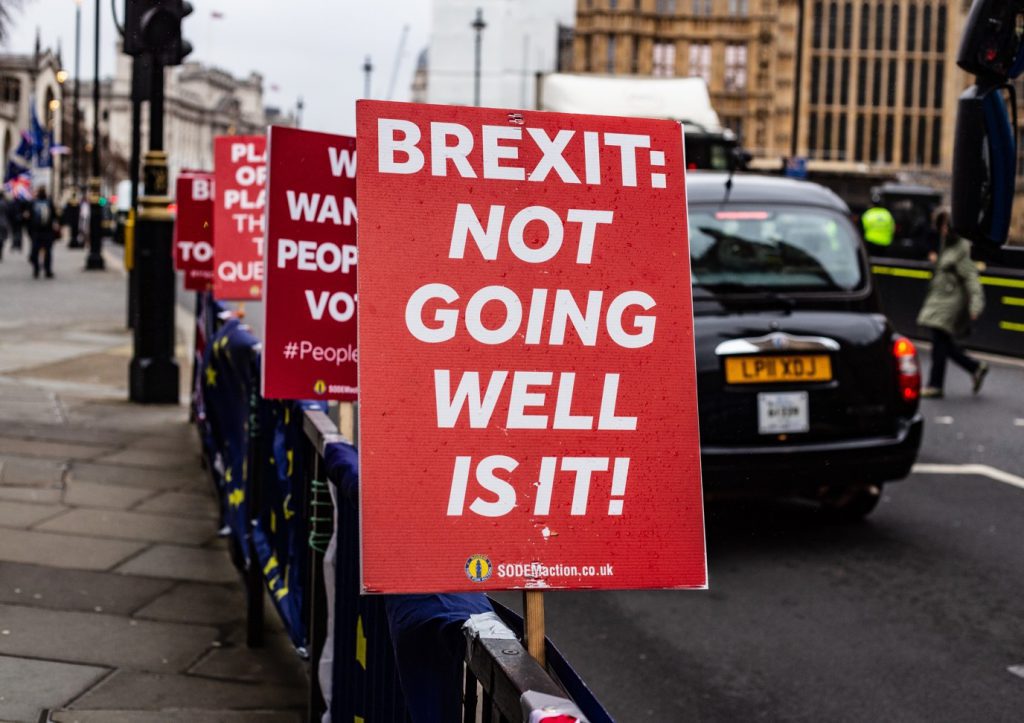Three years have passed since UK voted to leave the EU on the 23 June 2016 by a majority of 51.9% to 48.1%. Despite the UK triggering Article 50 to initiate the formal exit process with a leave date set for the 29 March 2019, the UK remains within the EU until the extended Article 50 deadline of the 31 October 2019.
In the first of this two-part series, Will Martin, a Tetra Tech partner with expertise in product compliance requirements particularly in the UK, is dissecting why Prime Minister Theresa May’s EU Withdrawal Agreement has failed to pass by the UK parliament and why a no-deal Brexit is looking increasingly likely.
The EU Withdrawal Agreement
The EU Withdrawal Agreement — finalised between the UK and EU on 14 November 2018 — sets out what will happen during a 21-month transition period following the original Article 50 exit date to provide continuity of trade, cooperation between the UK and EU on security and defence, and protection of UK and EU citizens’ rights whilst the long-term trade deal is being negotiated.
Given that in 2016, 43% of UK exports were to the EU, and a further 12% were to countries with EU preferential trade deals, the specifics of the trading relationship with the EU will be vital in protecting the UK’s immediate and long-term economic interests. Importantly, the transition period also provides time for businesses to adapt and prepare for the new trading relationship between the UK and EU.
During this transition period, the UK will have left the EU but will remain in the EU’s single market and customs union. This means frictionless free trade will continue without checks and delays at borders, but the UK will have to continue to follow EU rules and regulations. That includes EU budgetary payments, accepting European Court of Justice rulings, and allowing free movement of people. As the UK will have left the EU and will no longer have a presence in the European Parliament, European Commission or European Court of Justice, the UK will no longer have any say in making or changing rules.
The 21-month transition period starts on the original 31 March Article 50 deadline for the UK to formally leave the EU. That takes until the end of the transition period to the 31 December 2020 which also coincides with the end of the EU’s seven-year budget cycle. Moving the Article 50 deadline to the 31 October has effectively reduced transition period by seven months, significantly reducing the negotiation time for the long-term trading arrangement between the UK and EU. Should more time be required to negotiate the long-term agreement, the transition period can be extended by one or two years, although this would be difficult politically for the UK Brexiteers who want to leave the EU as soon as possible, but also on the EU’s side as they move focus to the next seven-year budget cycle.
The UK Parliament has debated the Agreement on several occasions and it has been voted on three times, but the House of Commons has not endorsed it, which greatly increases the prospects of the UK leaving the EU without a deal on 31 October.
Objections to the EU Withdrawal Agreement
The objections are in part due to the lack of control the UK will have during the transition period, but most controversial of all is the backstop arrangement.
If no trade deal has been struck by the end of the transition period, the backstop will be implement to avoid the creation of a hard border between Northern Ireland and the Republic of Ireland. This is to avoid a resurgence of the conflict and sectarian violence that was exacerbated in the past by the presence of physical infrastructure and checks on the Irish border. The backstop will comprise a single customs territory between the EU and UK that will ensure no physical border is reinstated.
If the backstop is in operation, the UK will be subject to “level playing field conditions” to not gain a competitive advantage while remaining in the same customs territory. That means the UK could not implement any trade deals with non-EU countries around the world that would involve removing tariffs on goods. The UK cannot leave this arrangement without EU approval which presents a huge sticking point to approving the Agreement over the concern that the UK could, in theory, be locked into a customs union with the EU indefinitely.
The Agreement is further compromised by the fact that, prior to its negotiation, the UK government led by Theresa May did not seek consensus from the electorate, parliament or her own party on what form of Brexit should be negotiated with the EU. For example: Did the UK want a “soft Brexit” whereby the UK remains within the Common Market like Norway, or did the UK want a “hard Brexit” whereby the UK leaves the EU single market and customs union and seeks to secure trade deals with the EU and with other countries?
This lack of a clear vision and underpinning strategy has entrenched views on the Leave and Remain sides, leaving both main parties deeply divided and unpopular with the electorate. Meanwhile populist movements such as Nigel Farage’s Brexit party have gained ground capitalising on the lack of progress implementing “the will of the people”.
Where Are We Now?
Prime Minster Theresa May has stepped down to make way for a new Conservative Party Prime Minister to manage Brexit. The contest to elect a new Conservative Party leader concluded on 23 July with Boris Johnson, a prominent Leave campaigner, winning the contest to become the UK’s new Prime Minister.
During the leadership campaign, Boris Johnson adopted a hard-line stance on Brexit, stating that the UK will leave the EU on 31 October come what may, with or without a deal. Given that the EU has repeatedly stated that it will not reopen and renegotiate the EU Withdrawal Agreement, and the limited time left now between the conclusion of the leadership contest and the 31 October deadline, this significantly raises the risk of the UK crashing out of Europe with no deal.
Looking at the UK economy more broadly, the UK independent watchdog The Office for Budget Responsibility (OBR) has just published its analysis that a no-deal Brexit will likely cause the UK to fall into recession, and economic growth could fall 2% by 2020 relative to forecasts where the EU Withdrawal Agreement was in place.
What Does This Mean for the Automotive Industry?
There are many implications of a no-deal Brexit for the automotive industry. Please check back next week where I will break down the future impacts on automotive players within and outside the UK.
And to keep abreast of Brexit developments and strengthen your product compliance to easily adjust to any Brexit situation, contact us.
Will Martin, Managing Director of EPR Consulting Ltd, has collaborated with Tetra Tech as their UK-based product compliance expert since 2005, serving clients in automotive and aerospace industries with ELV/IMDS and REACH guidance and support. With Tetra Tech’s recent acquisition of WYG, Will’s collaborations with Tetra Tech will be enhanced as he continues to support us to guide clients through Brexit and other challenges. Details of upcoming IMDS and REACH training courses in the UK can be found here.






